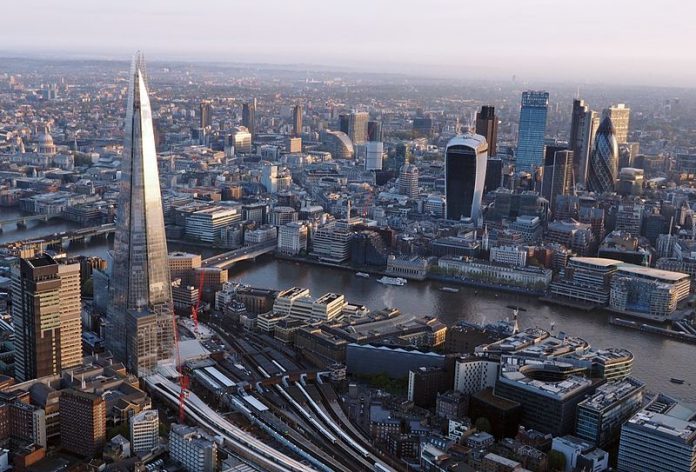The founders of the London Fish Exchange want to digitise the physical trade of salmon.
“We went live last year, in the middle of the pandemic. We have put in a 5 – 10 year plan to get where we want to go,” John Ersser told SalmonBusiness.
Together with the Swede Tommy Pettersson, the Briton is behind the London Fish Exchange, which has big stock exchange plans. First for salmon, then for other fish species. The duo has a versatile and multinational work experience, related to mediation, consulting and computing. Ersser has, among other things, been COO in the investment bank CMC. Partner Pettersson has been an adviser to the London Stock Exchange.
Now a salmon exchange is next, the London Fish Exchange. The first bid is to find and offer traders the right salmon price.

The right price
“For us, it is important to find the right price and present it to people. We have a multimillion dollar technology aimed at commodity trading. We have spent a year making it work on salmon,” explained Ersser.
The salmon price is updated daily, at 2pm.
“It retrieves prices from the system or people give it to us. In future, it will be updated more frequently, and eventually also real time. Our selling price is slightly higher if one compares with the weekly Nasdaq price – as you would expect,” he said.
Is Fish Pool a competitor for you?
“No, we know Fish Pool well and they do something different than us. They trade in futures derivatives for hedging and we even promote their prices. We are in the physical market and not just Norwegian sourced, we also offer contracts and VAP (Value Added Products) and are expanding into additional species,” said Pettersson.
Courses
The London Fish Exchange’s trading overview shows prices, currency, Statistics Norway price, Nasdaq price, Fish Pools forward curves. The design, with a dark background and coloured graphs, is not unlike online brokerages for stocks and commodities at, for example, Infront or Bloomberg.

What would it cost me to buy a 4-5 kilo salmon today?
“NOK 75.80-75.99 (EUR 7.54 -7.56) We trade 3-6 kilos of FCA Oslo,” said Ersser. “At the moment, this is a tool for buyers and sellers in the physical market. In the long run, it can become valuable and develop. We note a significant interest from investors in the ESG segment. But for now, our goal is to offer a service to make life easier for those who trade salmon globally”.
Do you want to include billing systems similar to what Maritech has?
“We definitely want to look at something in that direction. Our technology hasn’t been aimed at this industry before. We want Norwegian, Chilean, Scottish, Canadian, Icelandic, Australian and New Zealand salmon. We want to give a global picture. Both fresh and frozen salmon,” said Ersser.
You are not the first to want to digitise the trade in salmon – in an industry that likes to shop over the phone and email. Why will you succeed?
“Back in the days when we launched internet-based stock trading, derivatives or FX there was always some skepticism. But gradually it changed when they found in the end it was overall easier to do so. Then there was a shift in mentality and habits,” said Pettersson.
But if you trade shares in Amazon or Microsoft, then it is commodities?
“A salmon is not a salmon – some are redder in the flesh, juicier and shinier in the skin than others,” he added.

“We have spent a lot of time on understanding the underlying details of a trade and can provide from simple to complex depending on the users requirements. Even though there has been a pandemic. We’ve got some of the big ones on the hook. So we’re really quite happy. There is quite a lot of inefficiency in getting the fish traded,” added Pettersson further.
Now there are many shady elements, both among buyers and sellers of salmon. How are you going to manage counterparty risk?
“We are not Ebay or an e-commerce platform. We talk to everyone who trades with us. In Norway there is credit insurance, in Chile there is payment at delivery. There are different ways to shop. At the same time, those who shop with us can choose who they do or do not want to shop with,” he said.
Trust
“We believe in the importance of both a trusted and independent venue which works for everyone, and provenance is very important for some buyers,” he emphasised.
Inside the system, they have their own chat system, where buyers and sellers can talk to each other.
“It’s not unlike WhatsApp or SMS,” Pettersson said.
How do you handle it when integrated companies, which own farming and processing, want to trade?
“We have talked to some of the integrated ones. Some of them probably won’t go that way, while others of them will have this support. In Chile, the market is D-trim, processed products, but it is not traded differently with Norway”, he added.
As soon as they have got the salmon trade up in volume, other species are next.
“The advantage of this system is that we can now easily implement other species, for example, shrimp, sea bass or white fish,” said Ersser.
As they depend on uncompromising integrity, ownership of the company is essential.
“John and I control the ownership of the company completely, and then we have some financial supporters with us,” said Pettersson.


